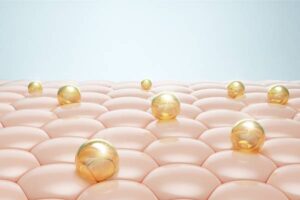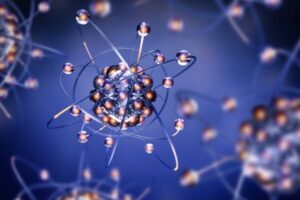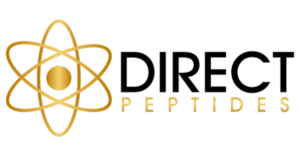
GHK-Cu Capsules: Copper Peptides For Skin
GHK-Cu Capsules: Copper Peptides For Skin In an ever-evolving world of beauty standards, the quest for vibrant, healthy skin remains
Melanotan 1 and Melanotan 2, two peptides (also known as MT1 and MT2) that have taken the research world by storm, are renowned for their ability to influence the body’s skin pigmentation process. Melanotan 1, also referred to as Afamelanotide, primarily stimulates the production of melanin, a pigment that protects the skin from harmful UV rays. On the other hand, Melanotan 2, while still promoting melanin production, also boasts additional effects such as appetite suppression and increased libido.
Understanding the differences between MT1 and MT2 is crucial, as these peptides, while similar in name, present distinct properties and potential applications. This knowledge helps guide the usage of these peptides, ensuring they are utilised correctly based on the individual’s research needs and expectations. So, let’s delve into the specifics of MT1 and MT2 and examine their unique attributes and implications.
The products mentioned in this post is intended for research and medical purposes only, to be only used by trained professionals.
Melanotan is a synthetic peptide designed to stimulate the body’s response to sunlight exposure and subsequently increase the production of melanin, the pigment responsible for skin colour. This response is essentially a natural body defense mechanism against harmful sun rays. The two variants, MT1 and MT2, both serve this purpose, but with slight variations in their function and additional effects.
The journey of Melanotan began in the 1980s at the University of Arizona. Scientists, driven by the goal of creating a sunless tanning solution to reduce the risk of skin cancer, initially developed Melanotan 1. The second variant, Melanotan 2, was later produced with an extended peptide chain, promising not only tanning effects but also other potential benefits such as appetite suppression and libido enhancement. Over the past few decades, these peptides have garnered significant attention in the Oceania research realm, with ongoing studies to explore their full potential.
Direct Peptides Melanotan 1, scientifically known as Afamelanotide, is a synthetic peptide engineered to mirror the effects of a naturally occurring hormone, α-MSH (alpha-melanocyte-stimulating hormone). This hormone plays a crucial role in regulating skin colour by stimulating the production of melanin. Melanotan 1 follows the same pathway, promoting the production of melanin upon exposure to UV radiation. It is designed to act selectively on the melanocortin-1 receptor, which is primarily found in skin cells.
While Melanotan 1 is generally well-tolerated, potential side effects may occur, particularly following the initial administration. These may include facial flushing, nausea, and a decrease in appetite. Most side effects subside with regular use as the body adjusts to the peptide. Individuals should always follow the recommended dose and consult a Oceania healthcare professional before starting usage. Studies are ongoing to further investigate the long-term effects and safety of Melanotan 1.
MT2, like its predecessor MT1, is a synthetic peptide that stimulates melanin production in the body. However, it distinguishes itself through its extended peptide chain, which allows it to bind with various receptors. While Melanotan 1 is more specific in its action, focusing mainly on skin pigmentation, Melanotan 2’s broader scope of influence results in a wider range of potential effects. Explore Melanotan 2 from Direct Peptides.
As with all peptides, MT2 can have potential side effects. According to research, some users have reported facial flushing, nausea, and decreased appetite, similar to the effects observed with MT1. Unique to MT2, however, are reports of increased sexual drive and spontaneous erections. Due to its wider range of effects, users should exercise more caution when using Melanotan 2 compared to Melanotan 1. It is generally recommended to start with a lower dose and adjust gradually. Always consult with a Oceania healthcare professional before starting any new supplementation regime. Further studies are needed to understand the long-term safety and efficacy of MT2.
When comparing MT1 and MT2, several similarities and differences emerge. Both peptides principally stimulate the production of melanin, providing a protective tan that shields the skin from harmful UV rays. They are synthetic, mimicking the action of natural hormones in the body, and both offer a safer alternative to sunbathing and tanning beds.
While both MT1 and MT2 offer intriguing possibilities, it’s essential to consult with a Oceania healthcare professional before beginning any new supplementation regimen.
In conclusion, MT1 and MT2 both play pivotal roles in skin pigmentation, offering a protective barrier against harmful UV radiation while serving as safer alternatives to sunbathing and tanning beds. However, they differ in their scope of influence and potential side effects. Melanotan 1, with a more focused action, primarily enhances skin pigmentation with fewer side effects, while Melanotan 2 offers additional effects such as appetite suppression and libido enhancement, albeit with a greater spectrum of side effects.
As a result, MT2 requires a more cautious approach in terms of usage and dosage. It’s crucial to remember that while both offer compelling benefits, the choice between Melanotan 1 and 2 should be guided by individual needs, the desired scope of effects, and tolerance to potential side effects. Always consult with a healthcare professional before starting any new supplement regimen to ensure it’s the right fit for you.
[1] https://www.ncbi.nlm.nih.gov/ pubmed/8637402
[2] https://pubmed.ncbi.nlm.nih.gov/ 16412534/
[3] https://pubmed.ncbi.nlm.nih.gov/ 11035391/
[4] https://pubmed.ncbi.nlm.nih.gov/ 17584128/
[5] https://www.sciencedirect.com/ science/article/abs/pii/S0022534701 629033

GHK-Cu Capsules: Copper Peptides For Skin In an ever-evolving world of beauty standards, the quest for vibrant, healthy skin remains

Explore the anti-aging effects of Epithalon And Thymalin Stack The pursuit of longevity and delaying the signs of aging is

What Is NAD+? Discover The Key Molecule in Human Physiology Hidden in cellular metabolism is a modest molecule that greatly

Exploring the Benefits of Vasoactive Intestinal Peptide (VIP) The quest for cutting-edge medical treatments is an ongoing saga, and in

401 N. Mills Ave, Ste B, Orlando, FL 32803, United States
